Taking your campervan off-road can get you some of the most amazing campsites. But before blasting off on dirt roads to find those epic spots, you should pick up some campervan off-roading essentials.
You don’t want to get stuck in the middle of nowhere, especially if you can simply rescue yourself with just a few simple tools and equipment.
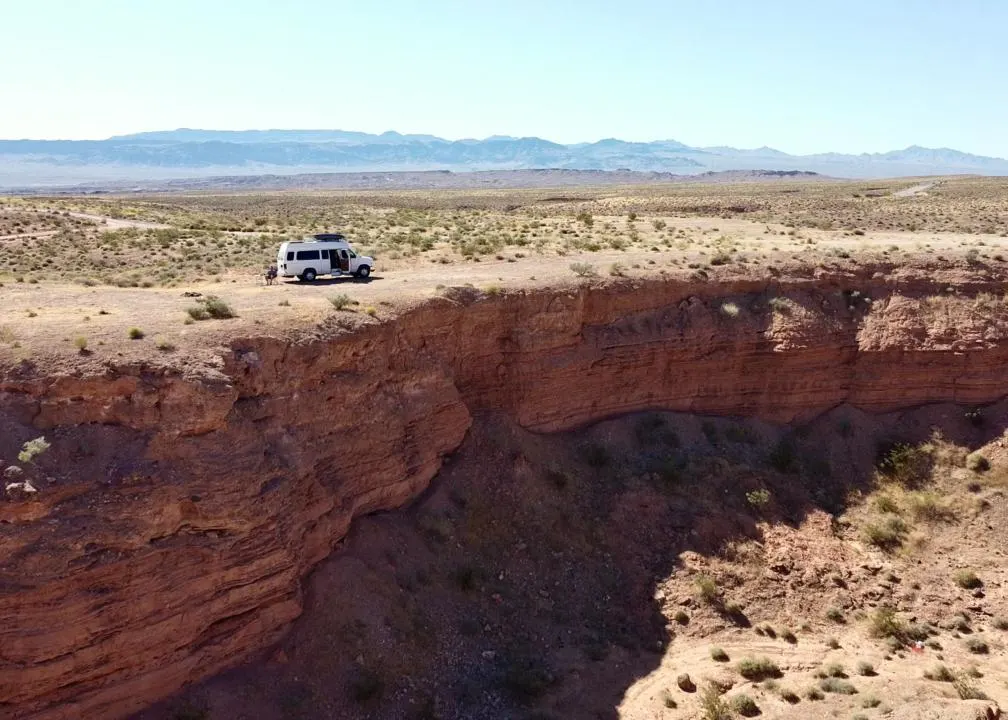
When researching off-roading mods and equipment you may find yourself in the forums of serious off-roaders. You will quickly realize that things are really expensive.
So your dreams of having the bad-ass rugged 4×4 campervan with all the cool off-road mods will have to be put on hold (at least until you come up with a couple thousand dollars).
But don’t worry, you can still get to all kinds of amazing places without the expensive off-road mods. After all, there’s a big difference between someone rock crawling for sport, and your casual off-roader just trying to make it from point A to point B on a bumpy dirt road.
This article is geared toward people who fall into the latter group (like Emily and I). Our campervan is our home and not just some toy we like to beat up on dirt roads for fun. But we still want to be able to drive dirt roads with confidence.
So this a collection of all the most essential and affordable campervan off-roading essentials. These tools can prevent you from getting stuck, help you get un-stuck, and give you more peace of mind when traveling off the beaten path.
This post may contain affiliate links. Disclosure policy.
All-Terrain tires
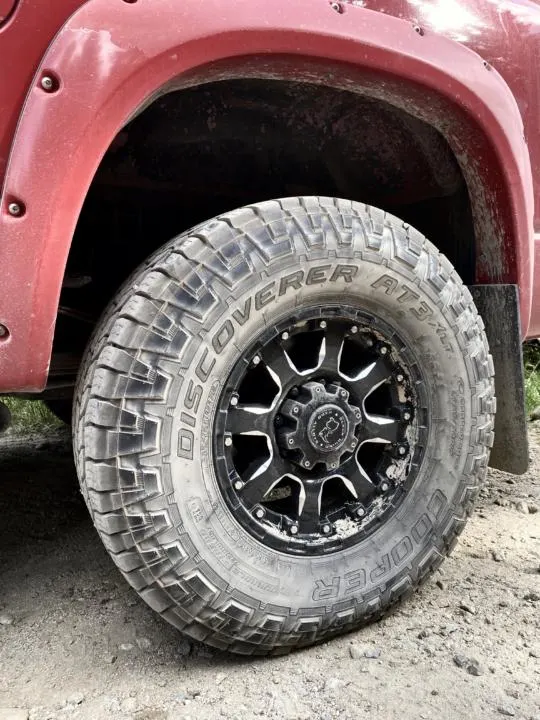
The number one thing on the list of campervan off-roading essentials is tires. Get yourself a trusted pair of All-Terrain or All-Season tires.
Even a 2WD van can be pretty capable with a good set of tires. Most people who take vehicles off-road still do the majority of their driving on paved roads. So all-terrain tires are a good compromise because they are capable off-road but are still decent for highway mpg and road noise.
The top-rated all-terrain tires are….
(Be sure to find the right size tire for your van, either in the manual or on the driver door sticker)
BF Goodrich KOA 2 – Top pick, most aggressive tread
Cooper Discoverer AT3 – Runner up to BF Goodrich (slightly better in snow)
Hankook Dynapro ATM – Best Budget Option (that’s still a great tire)
Michelin Defender LTX – Longest Lasting All-Season Tire (More highway-oriented though)
Tire Deflators
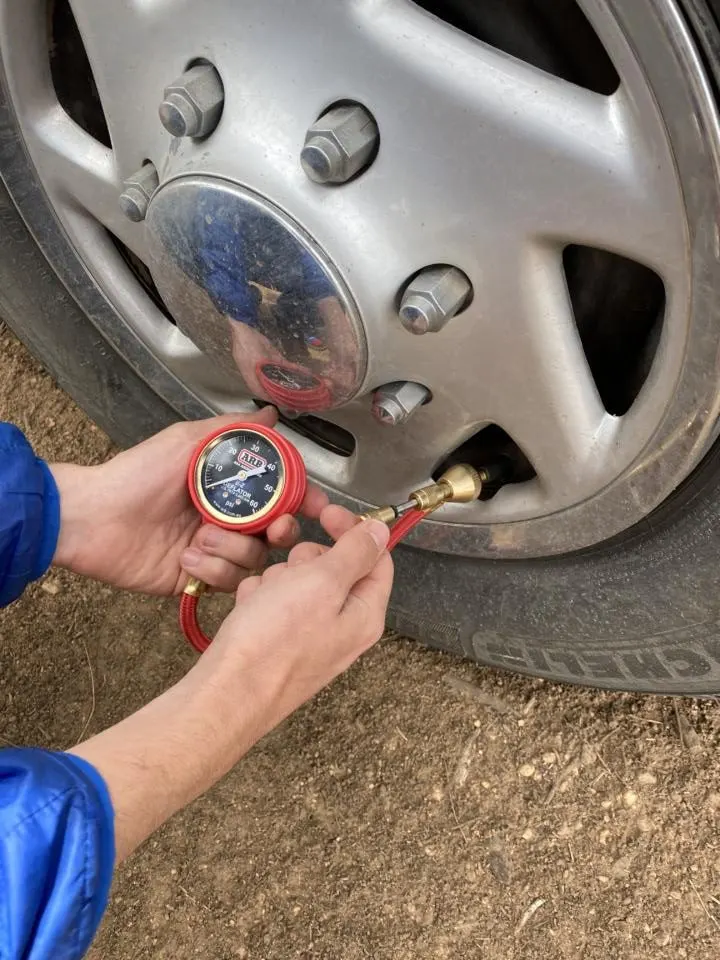
The best way to get more traction out of your tires is to let some air out, known as “airing down”. With less air in your tires, you increase the surface area that makes contact with the ground. That’s why tire deflators are important campervan off-roading essentials.
But there are some important things to know about airing down.
First, you should only air down your tires if you have the means to re-inflate them when you return to pavement. Driving with deflated tires on pavement can cause excess wear, damage, or complete failure.
Second, you should always air down as a percentage of your factory recommended tire pressure, and not a static psi number. You can find the factory-recommended tire pressure on the driver’s side door frame. A decent rule of thumb for airing down is 25% for washboard/bumpy roads, 30% for slickrock/rocky roads, and 50% for soft sand.
Third, drive slowly on aired down tires. You can cause damage to the tire by driving too fast. A good general rule of thumb is no faster than 35mph, and even slower for a 50% air down.
The best tools for airing down are…
Staun Automatic Tire Deflators

Staun Automatic Tire Deflators are the top-of-the-line tire deflators. They are expensive, but they are the fastest, most convenient, and have quality construction that’s built to last, unlike the cheap imitators.
They are fastest to use because all four tires can be deflated at once. And you don’t have to monitor the PSI, you simply set it, and then it stops when it reaches the desired PSI. For a heavy vehicle like a campervan, you likely need the ones with the highest PSI rating (15-55 PSI).
ARB EZ Tire Deflator
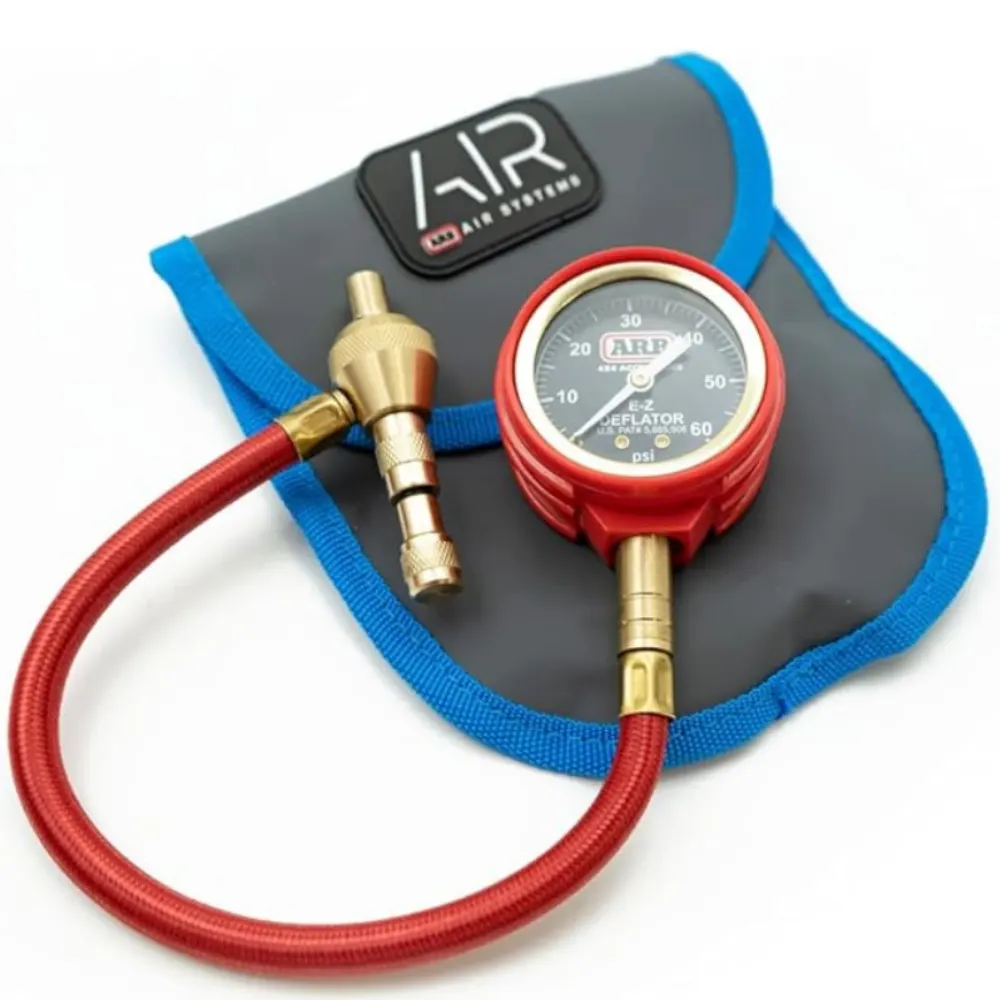
The ARB EZ Tire Deflator is a cheaper alternative that is still made by a respected off-roading company (ARB). You have to deflate each tire individually and monitor the PSI as you go, but it may be worth the savings if you don’t need to air-down often. All four tires can still be done in 10 minutes or less.
Air Compressor
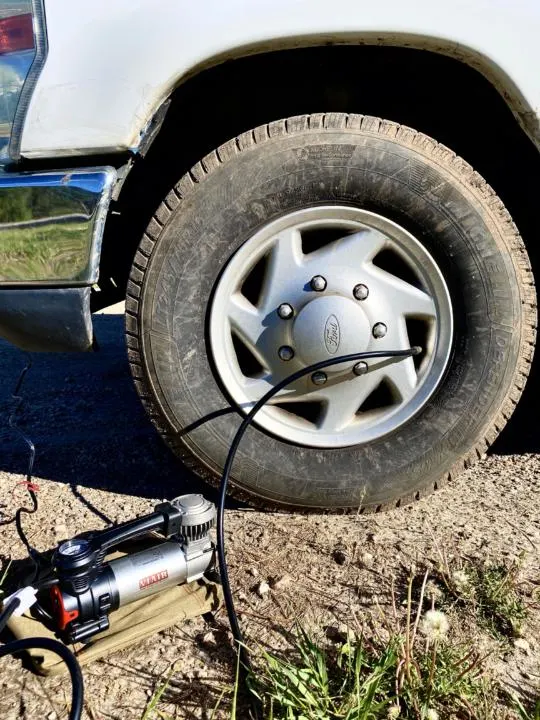
To re-inflate your tires you should have a portable air compressor. For bigger vehicles like campervans, you need an air compressor that has enough power for bigger, higher psi tires.
For example, our Ford E-350 needs tires inflated up to 80 PSI, which is much higher than your average passenger car, so those cheaper cigarette lighter compressors just don’t cut it.
Viair 88P Portable Air Compressor
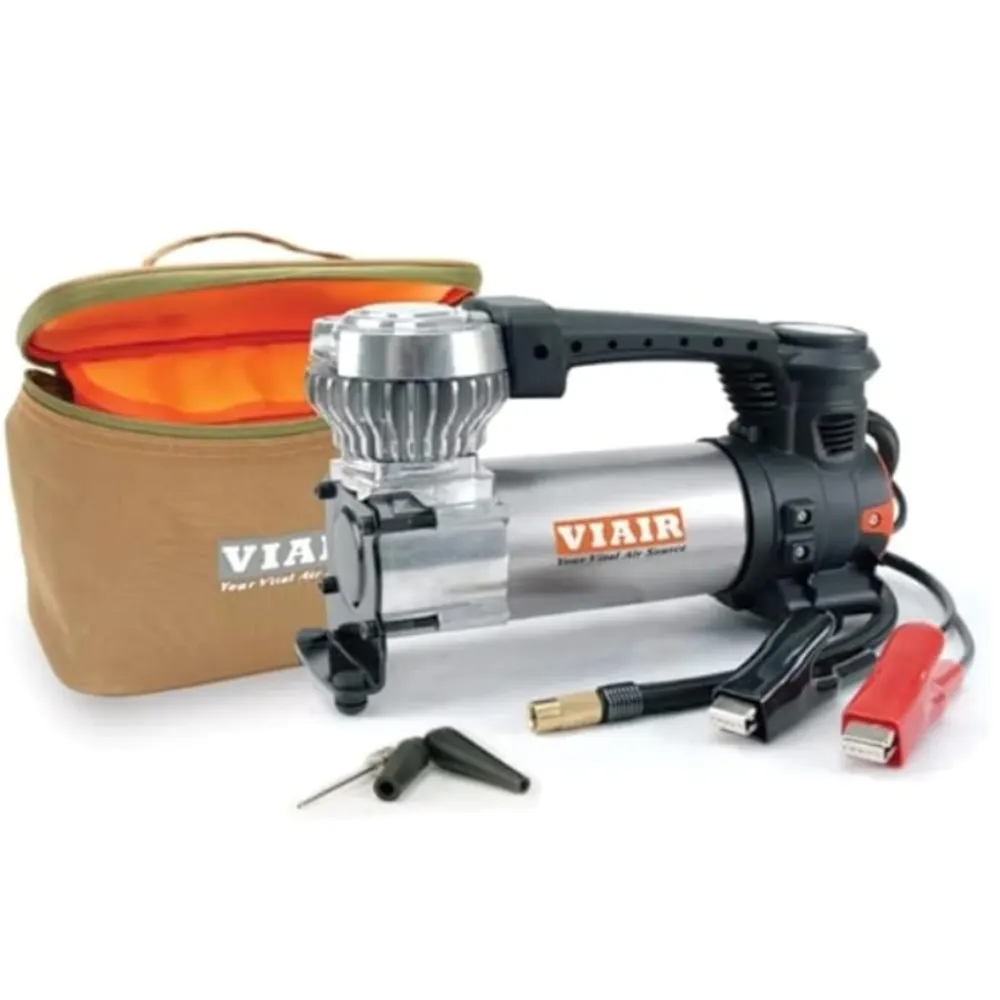
We recommend the Viair 88P Portable Air Compressor. This one connects to your van’s starter battery and has enough power to handle heavy-duty tires.
Shovel
The shovel is the most basic, but essential off-roading recovery tool. We recommend a military-style folding shovel. While they may not be the most ergonomic and effective style of shovel, they are the most compact which makes them a perfect fit for vanlife.
And hopefully, you use it more for digging poop holes than for rescuing your stuck campervan.
Sergeant Folding Shovel
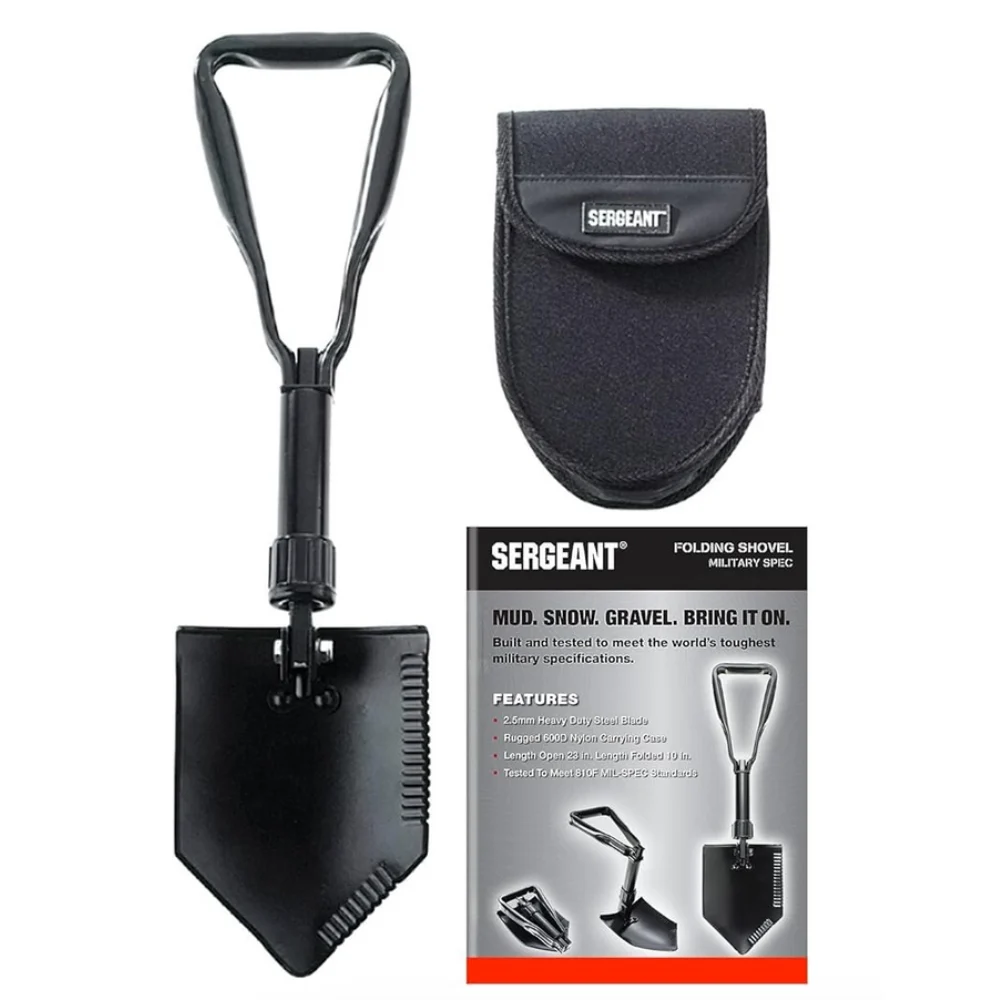
We have this one made by Sergeant. It’s made with heavy-duty steel and is plenty rugged for digging through rocky soil and ice if need be. And it comes with a case, that prevents a dirty shovel from spreading its filth.
Recovery Boards (Traction Boards)
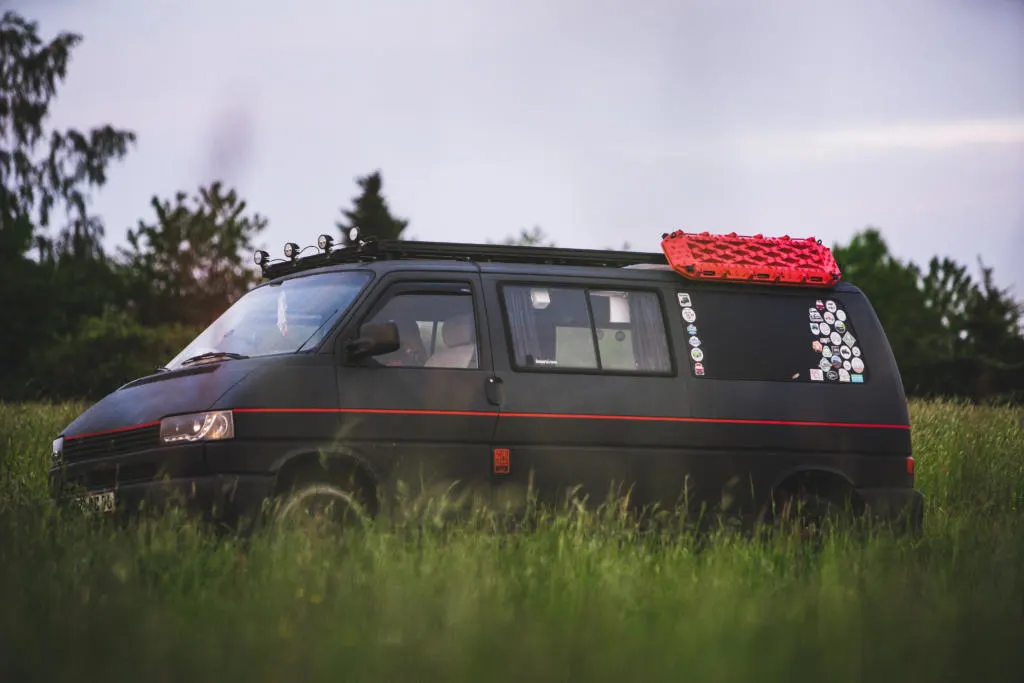
Recovery boards (or traction boards/mats) are like very grippy plastic boards that you can insert under your tires to give you extra traction. Sometimes if you feel your wheels start to spin out, all you need is a little extra traction to avoid getting truly stuck.
Or they can also be used to “bridge” over a ditch or conquer an abrupt pitch change. They are probably the most common campervan off-roading essentials, besides a shovel.
The negative of recovery boards is that they are large and you need to retrieve them after use. You either have to tether them to your vehicle with a leash or go back to get them after you get un-stuck.
And if you have a far way to drive until you reach “solid ground”, then you may have a long way to walk to collect your boards. Or repeatedly use the boards to reach “solid ground”.
The other big complaint is that the traction nubs can wear down really easily if you spin your wheels on the boards. All manufacturers tell you not to do this, but it’s not always easy to avoid. And worn down boards from wheel spinning is one thing that is never covered under warranty.
And for storage, most people store them attached to a rack on the outside of their vehicle.
Maxtrax Traction Boards
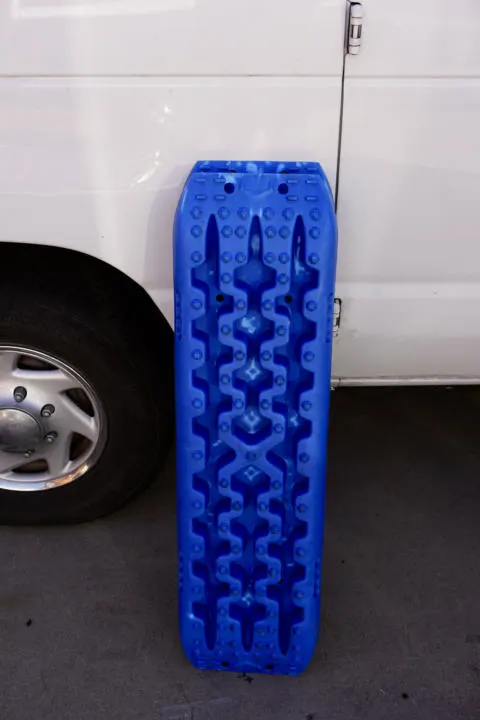
The top-of-the-line brand is MaxTrax. They are the most durable on the market and come with a lifetime warranty, but they are ridiculously expensive. I’m sure serious off-roaders would argue that they are worth that price. But for more casual users you may be happy taking your chances on a cheaper brand.
These Maxsa ones are about half the price of the Maxtrax and have good reviews. Or for a budget option, these X-Bull ones have pretty good reviews, the main complaint being durability. But at their price, you could go through 5 sets of these before reaching the same price as one set of Maxtrax. We have used our X-Bull ones successfully several times without huge complaints.
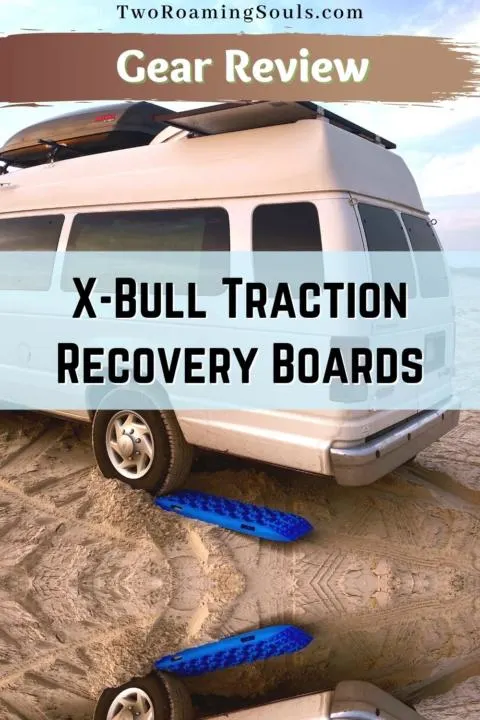
Check out our gear review for the X-Bull Traction Recovery Boards.
TracGrabbers
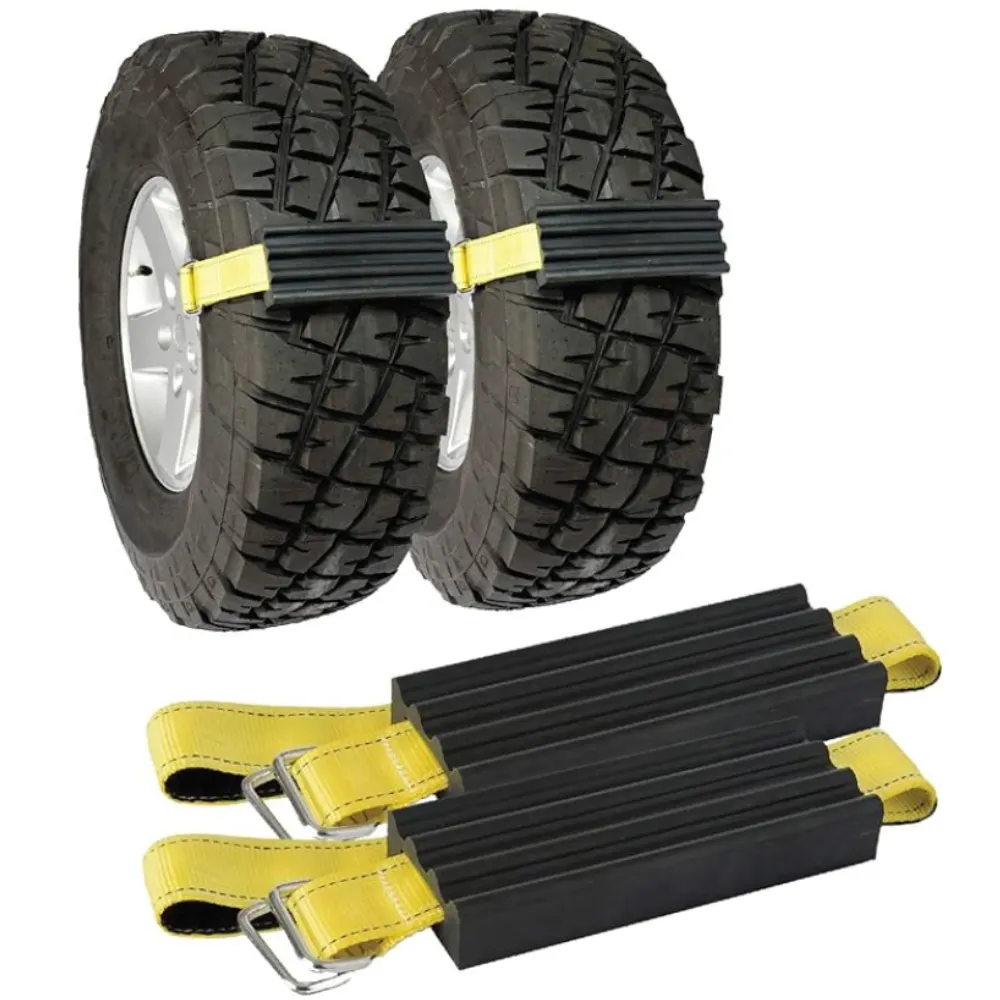
The best traction alternative to recovery boards are TracGrabbers. They are basically grippy rubber blocks that you strap onto your tires. The additional traction may be all you need to get you out of a tough spot.
They are generally much cheaper than recovery boards and they are way smaller to store, so that makes them a good fit for vanlife. If your van has AWD or 4WD then consider getting a set of 4 instead of 2.
I was skeptical at first, but they were recommended to us by one of the owners of Sportsmobile (pretty much the OG campervan company).
HOWEVER, we had a pair of these and shredded the straps on the first use. My theory is that the sharp metal edges on the inside of our wheels cut through the straps. So I can only recommend these to people whose wheels don’t have sharp edges. If they had stayed on, then they would have worked fine.
Remote Jumpstart
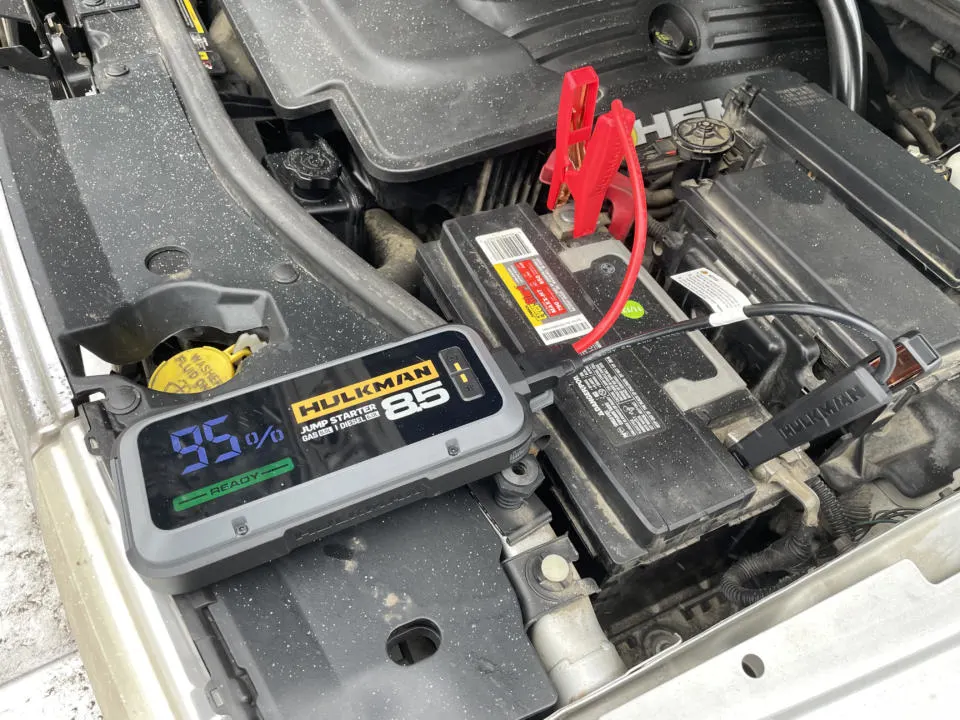
If your battery dies when you are out in the middle of nowhere, then having a remote jumpstart can get you going without relying on another motorist coming to your rescue. Remote jumpstart devices are extremely worthy campervan off-roading essentials.
Just recently we returned from a 3-month trip abroad to find our van’s battery dead. The van had been sitting idle all winter, but our Hulkman jumpstarter was still showing 100% charge and got the van started in no time.
HULKMAN Remote Jumpstart
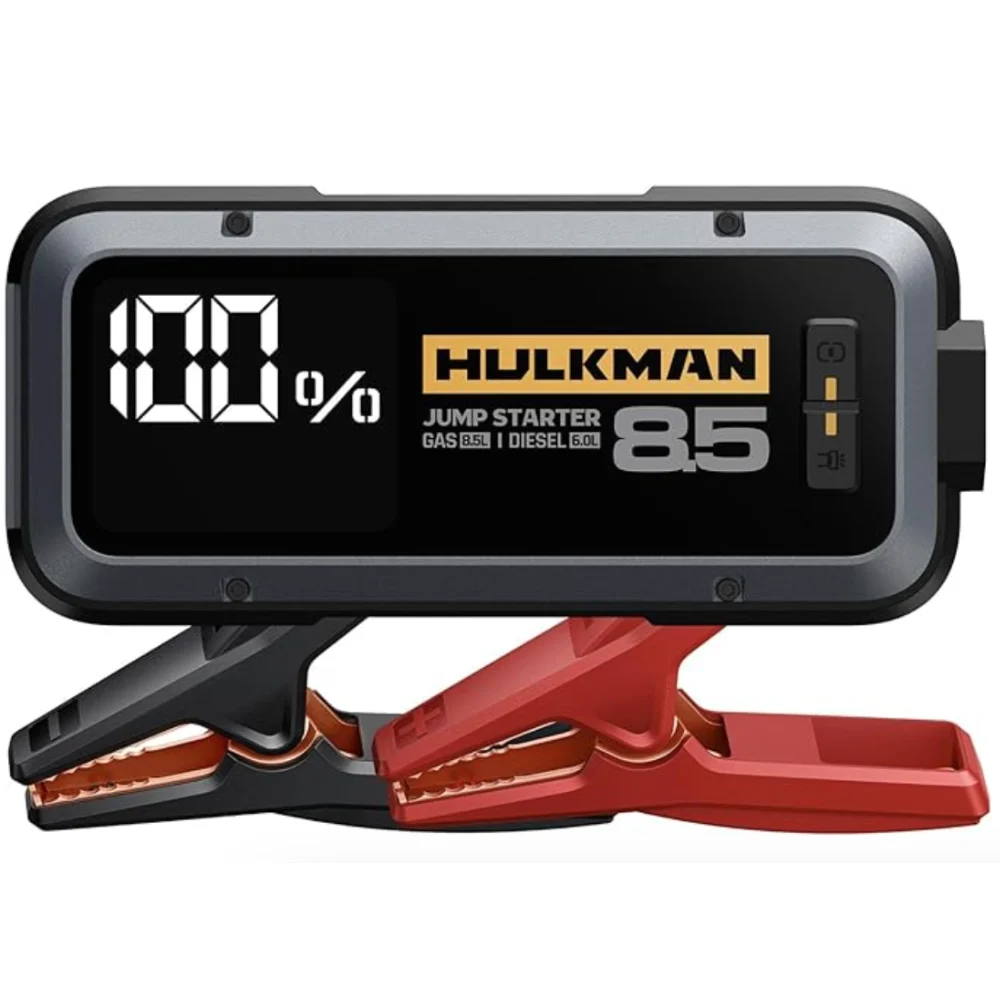
This HULKMAN Alpha 85 remote jumpstart with a 20,000mAh capacity is powerful enough for most campervan engines and it’s surprisingly compact. It can jumpstart up to 8.5L gas engines, and up to 6L diesel engines. It also doubles as an emergency powerbank for charging devices and has a flashlight.
Battery Isolators (with Remote Jumpstart)
The trouble with Remote Jumpstart devices is keeping them charged when you are living off-grid in a campervan. They are pretty power-hungry little devices.
So an alternative option is a device called a Battery Isolator that can also jumpstart your starter battery.
A battery isolator’s main purpose is to use your van’s alternator to charge a “house” or “leisure” battery. Some campervans choose to have a battery isolator instead of solar, mainly because it’s much cheaper. But you have to drive often enough to give your alternator time to keep your batteries charged.
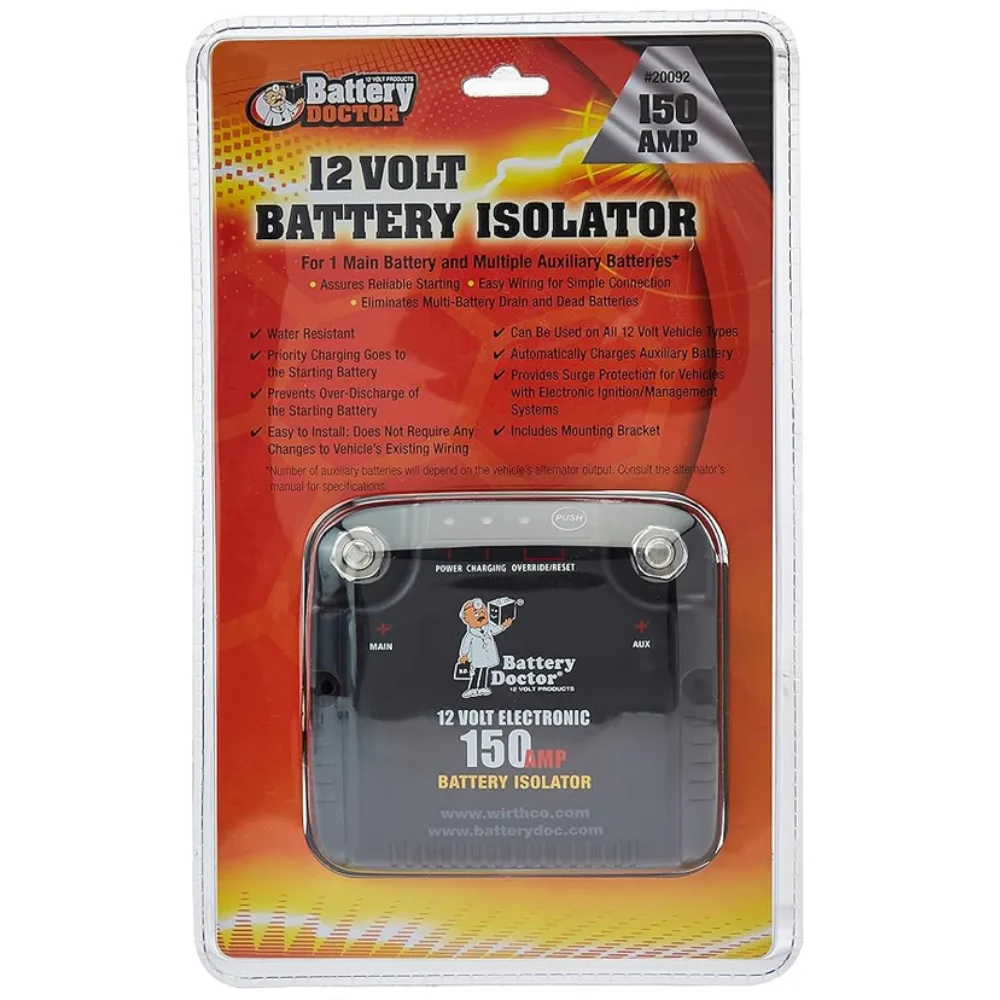
However, a cool feature of some battery isolators is that they can also send power in the opposite direction to jumpstart your van’s starter battery.
Two good options are this WirthCo Battery Isolator (for lead-acid batteries) or this LiFePO4 Battery Isolation Manager (for lithium batteries). This can be a nice perk if you were already planning on having a batter isolator anyway. Plus, you don’t have to worry about keeping a separate device charged for emergencies.
If you choose to skip both of these remote jumpstart items, then at least make sure that you have a pair of standard jumper cables.
Recovery Straps
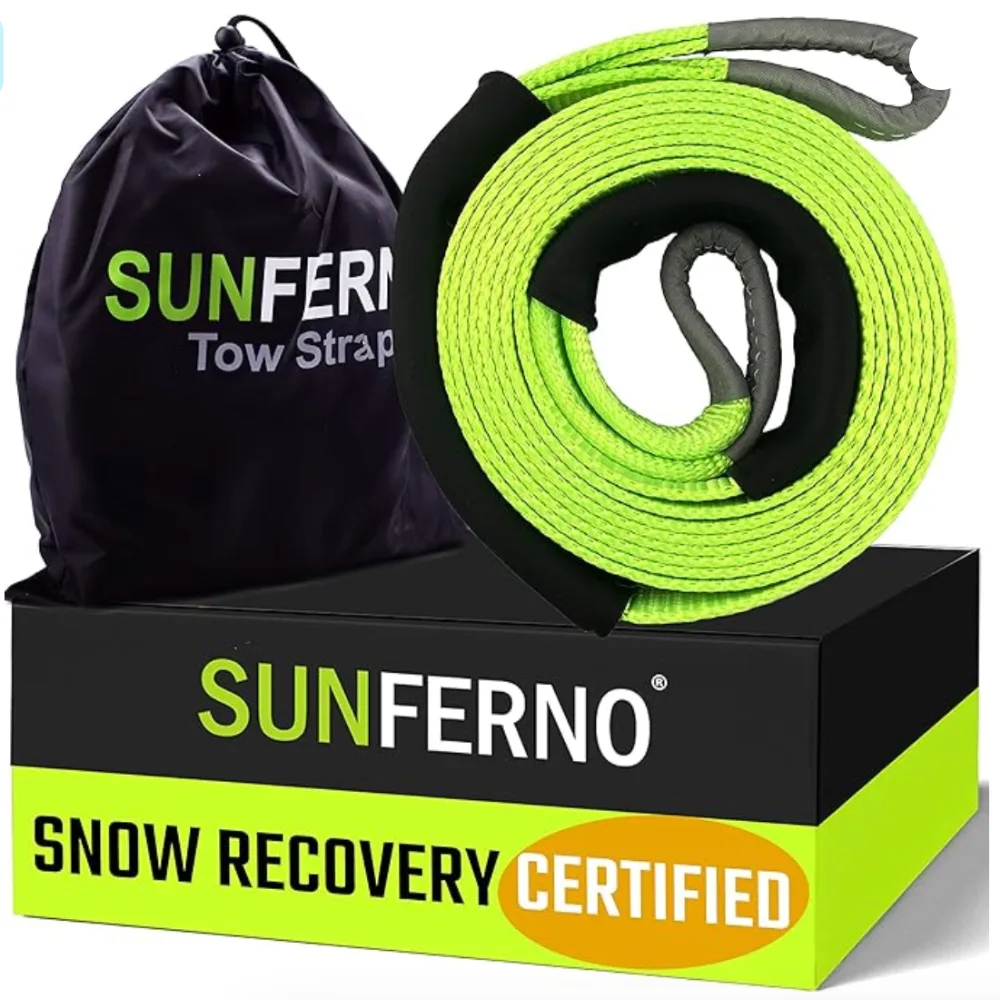
Recovery straps are strong straps that allow another vehicle to pull you out. However, they are completely useless if your van doesn’t have a viable place to attach them. Most stock vans don’t have a good place to attach recovery straps. If you just try to attach it to your bumper, you could rip it clean off.
So in order for recovery straps to be useful, you may need to invest in aftermarket bumpers or trailer hitches (plural because you may need to be pulled out from the front or the rear). And aftermarket bumpers and hitches are usually outside the price range of a casual off-roader.
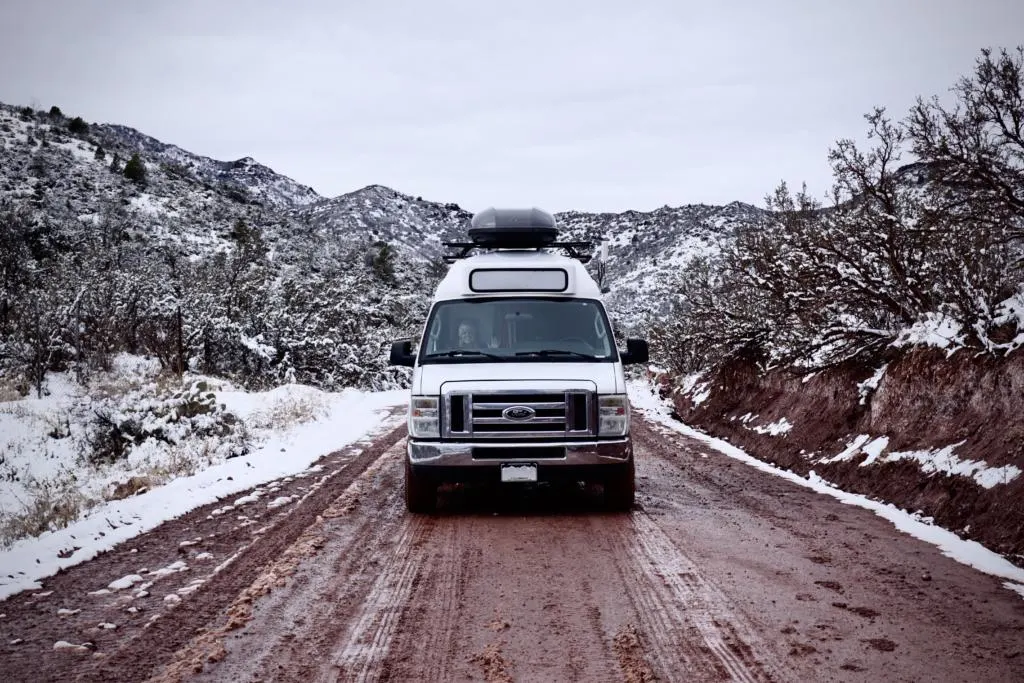
Snow Chains
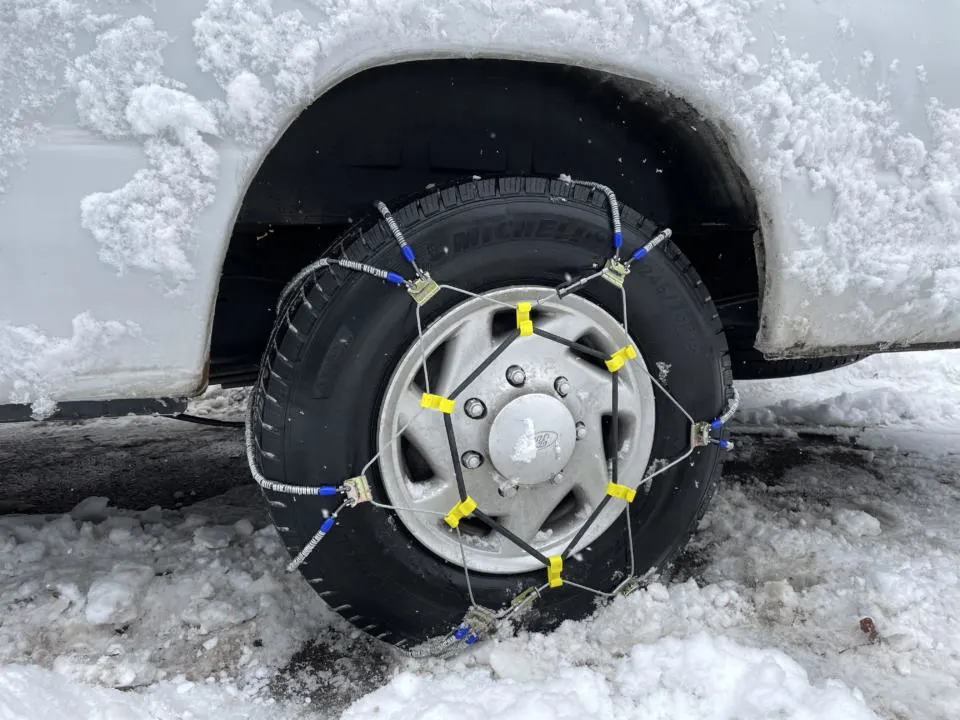
Another useful piece of gear you may want to add is snow chains. They are generally meant for driving on snowy roads, and will be less helpful in sand or mud.
But if you spend any decent time in snowy or icy conditions, you should have snow chains. They can help get you out of a snowed-in parking spot, up an icy hill, or just give you much more peace of mind on snow-packed roads.
The snow chains we have are the SCC Super-Z Snow Chains. They are rugged enough to handle the weight of a campervan, and the unique “Z” pattern provides a much smoother and more controlled ride compared to traditional snow chains.
And lastly, the rubber tensioner keeps the chains snug in place without the need to stop and re-tighten. But they definitely take a little practice to get good at setting up (usually with freezing fingers).
Winch Bumper
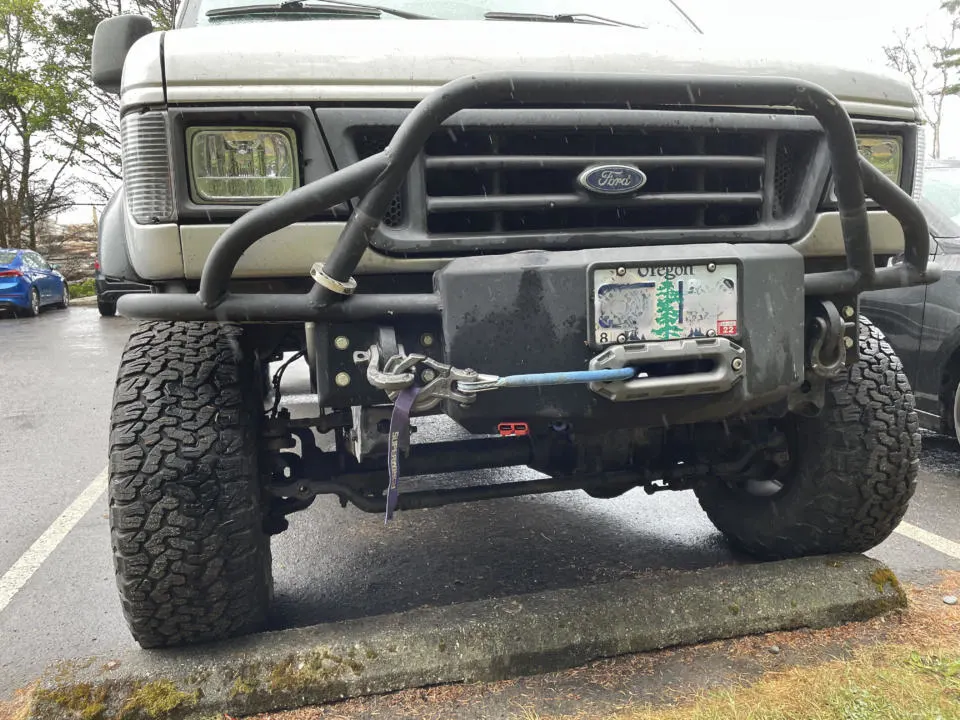
And while we’re on the subject, aftermarket winch bumpers provide strong recovery strap anchor points and also allow you to pull yourself out, as long as you can find something strong to attach the winch to, like a tree.
However, they cost thousands of dollars, so probably outside the scope of this post, but I figured they’re at least worth mentioning.
Hi-Lift Jack
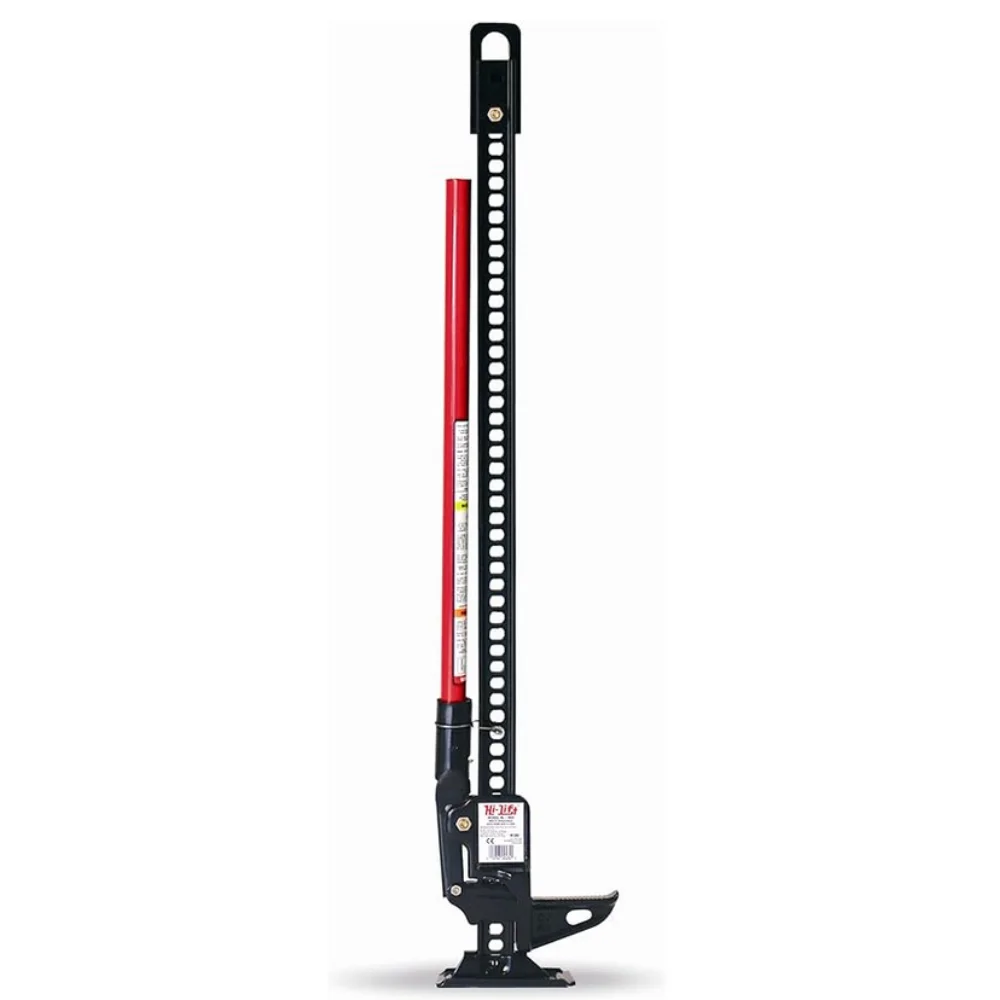
This Hi-lift Jack is basically a car jack on steroids. The extra height can lift your vehicle out of some really deep spots. And in addition, they can be used as a hand-winch.
The only issue is it isn’t designed for loads over 7000lbs. But if you have a smaller/lighter campervan then it could be a good tool to have.
Takeaway | Campervan Off-Roading Essentials
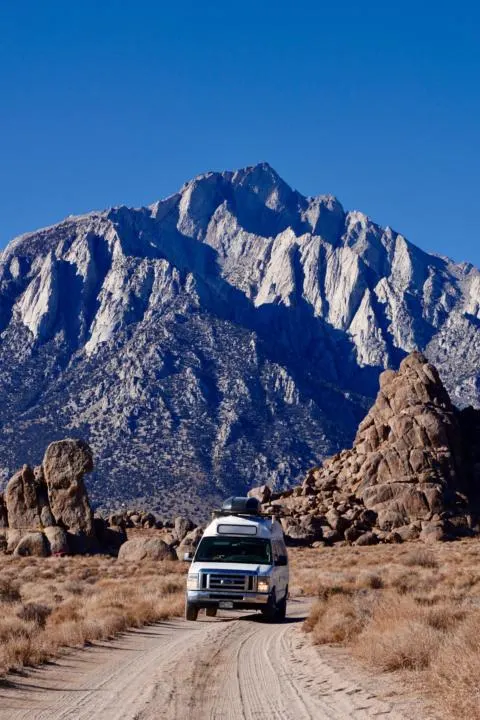
Taking your campervan off-roading can open up a whole world of possibilities. There are so many amazing destinations and campsites that require you to leave the pavement. You might not necessarily need a 4×4 campervan to reach some amazing campsites.
But make sure you have some campervan off-roading essentials to save you from getting stuck. Adding a few of these tools to your setup can make all the difference between having a good time and getting stranded. And the cost of a few of these tools is always cheaper than paying for a tow truck out in the middle of nowhere.
Save These ‘Campervan Off-Roading Essentials’ On Pinterest!
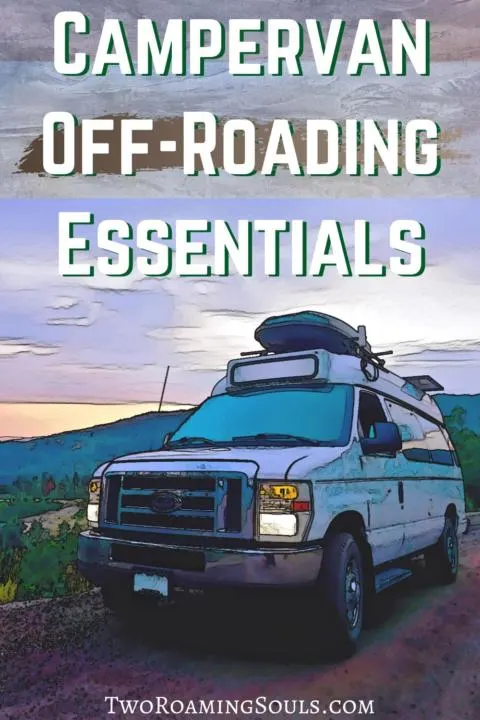
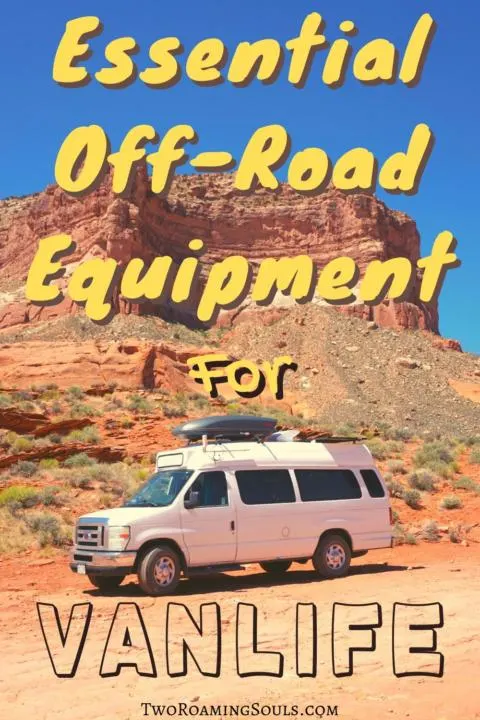

How To Choose A Van For A Campervan Conversion - tworoamingsouls
Sunday 7th of May 2023
[…] there are a handful of tools and methods that you can use to make your 2WD van more capable off-road. But we highly recommend that all campervans have safety and recovery gear regardless of the […]
Best Portable Toilet Options For Vanlife & Camping in 2023 - tworoamingsouls
Monday 10th of April 2023
[…] because it’s military-grade, folds down small when not in use, and can also double as a recovery gear shovel if the van is to ever get stuck. Also, please use biodegradable toilet paper if you […]
Ultimate Camping Checklist | Car Camping Essentials - tworoamingsouls
Saturday 11th of June 2022
[…] And if you plan to get way off-grid, consider some of these Campervan Off-roading Essentials. […]
Ultimate Camper Van Hacks To Make Vanlife Easier - tworoamingsouls
Friday 25th of February 2022
[…] you will want to make sure you are prepared with some camper van off-roading essentials when you go off-grid. This can especially be helpful when you don’t have an internet […]
12 Best Free Campsites In The Western U.S. - tworoamingsouls
Monday 6th of December 2021
[…] have a rwd camper van and we did get stuck. Luckily we had off-roading gear to help get us […]